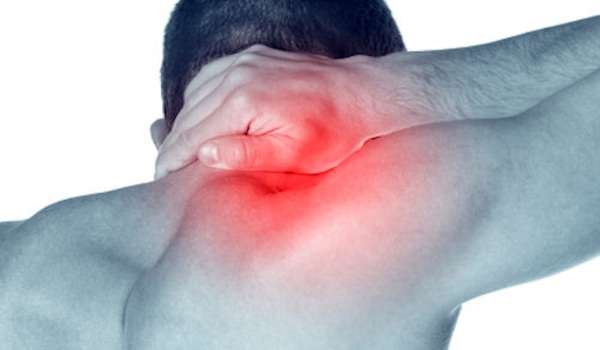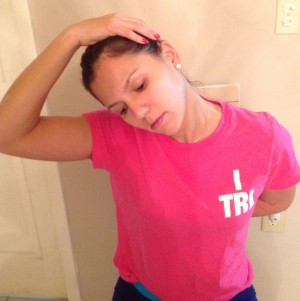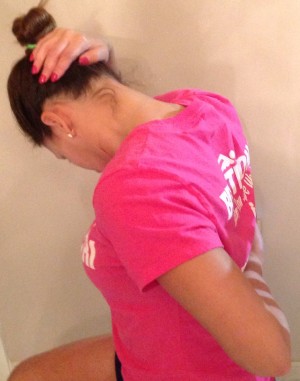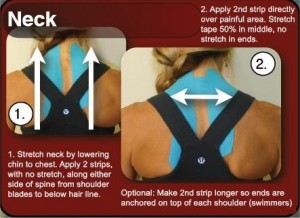Neck Pain Cycling
 One of things that takes getting used to when you first start cycling is the neck and shoulder discomfort. Even an experienced rider who has taken a short hiatus, and is returning to a regular regime can suffer from these aches. Typically, the discomfort is localized in your anterior deltoids, upper trap muscles and neck extensors. This can be attributed to a few causes such as bike fit, head positioning when riding and tightness of aforementioned muscles.
One of things that takes getting used to when you first start cycling is the neck and shoulder discomfort. Even an experienced rider who has taken a short hiatus, and is returning to a regular regime can suffer from these aches. Typically, the discomfort is localized in your anterior deltoids, upper trap muscles and neck extensors. This can be attributed to a few causes such as bike fit, head positioning when riding and tightness of aforementioned muscles.
Bike Fit
If you’ve read our previous articles you will understand how many issues can be initiated due to an improper bike fit. As a beginner cyclist it’s important to work with a bike fitting specialist and tweak one thing at a time, ride for about a week, and assess the changes. This allows you and the fitter to pinpoint the exact solution or cause in order to improve riding conditions. Often neck and shoulder pain is linked to having a high seat post in relation to your bars. When the seat post is too high it can place you in an aggressive position, which as a beginner cyclist you are not ready for. It’s a better tactic to gradually increase the aero position as you get used to cycling. Additionally, if your road or aero bars are too far away causing you to overreach you can place unecessary strain on these muscles. The solution would be to place the bars closer in relation to your body so you’re in a “tucked” position when riding.
Head Position
When I first started riding solo I remember how afraid I was of either riding off the road, or going over debris that would make me fall, that I looked up for the entire duration of my ride. Although I would finish my rides in one piece I had a soreness in my neck and shoulders that would last for days. I remember, constantly moving it side to side while riding to try to minimize the discomfort. I mentioned this to the bike fitter and he told me to keep my head down and only use my eyes to look up. What a difference this made! I practiced this on my rides as I was in the aero position and I no longer felt the pain in my neck. I would only look up with my head if I knew I was coming up on an intersection or bump in the road. During long rides it’s best to look up with your eyes and only tilt your head up when necessary or intermittently. Not only will this decrease your neck discomfort, but it will also make you slightly more aero.
Tight Muscles
As a beginner cyclist you are now forcing your body to use muscles either it hasn’t in other activities or in a different way. This leads to tightness, muscles spasms, and pain. However, there are a few stretching exercises that can be completed which will lead to disruption of the pain-spasm cycle. One exercise involves a lacrosse ball as demonstrated in “Massage Tips for Tight Muscles.” You place the lacrosse ball between you shoulder blades and roll side to side as well as up and down on the floor. Another variation is to do the same thing, but against a wall instead. Make sure to put your body weight over the knot and roll over it a few times for 20-30 seconds. This will typically release the restriction and cause the trap muscles to relax. There are two stretches that can be done to release the upper traps and neck extensors. Complete each stretch for 20-30 seconds a total of 3 times, several times a day. The first stretch requires you to put your arm behind your back of the side you are stretching. Then, use the other hand to tilt your head to the opposite shoulder.

Stretch two, requires you to look down at a 45 degree angle, and place the arm of the side you’re stretching behind your back. After, use the opposite hand to push the back of your head down further in that 45 degree angle. You may refer to the pictures for further demonstration.

Another helpful tool is to have a partner help you in placing rock tape/kinesio tape along your posterior neck muscles and upper traps. Rock taping offers several advantages such as added support, increased blood supply, and propioceptive feedback. The latter works on nerves which alert your brain to where a particular body part is, and offers feedback to either adapt a movement pattern, or execute it properly. Usually when purchasing rock tape it comes with a pamphlet that teaches you how to apply the tape for different injuries. Nevertheless, YouTube offers plenty of videos teaching how to apply it correctly. It is important to initially wipe the area with rubbing alcohol to remove any oil on the skin, then wipe off the alcohol. Next, make sure to cut the tape with rounded edges, not straight across. Then, break the tape in the middle and slowly apply it with no extra tension. Last, rub the tape to activate the adhesive with the heat generated. In following these steps you’re ensuring the tape lasts for several days and even through showers. You may refer to the photo for further demonstration.
If after following all these steps you’re still experiencing discomfort remember that there’s an adaptation process involved as a beginner cyclist. Just like in any other sport it takes time for the muscles to adapt to these new demands and with time they become accustomed. Once your body becomes used to your cycling position, your rides will be neck and shoulder pain free.
